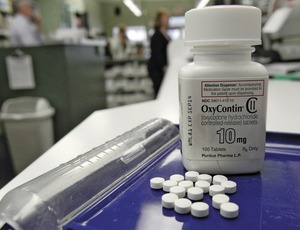
Someone forgot to send Missouri the memo about the latest research on rising costs in workers' compensation.
Concerned about fraudulent claims by workers, state Senator Mike Cunningham (R) late last year sponsored a bill that would have given employers access to a free online database of compensation claims. Employers would be able to screen workers for a history of fraud, without first securing permission from the worker. "I don't know how big a problem it is here. I know it is a problem," Cunningham told ENR. State lawmakers adopted the change, but Gov. Jay Nixon (D) vetoed the bill in July, citing the potential for violating federal discrimination laws against the disabled.
Missouri's focus on worker fraud also may violate common sense. The old image of workers' compensation as a system plagued by malingering workers who fake or exaggerate an injury in order to work a second job or enjoy their leisure has gradually given way to a more accurate picture.
Cheating by employers inflicts a higher loss on workers' compensation than worker fraud, research shows, and drug costs, driven by a steady increase in prescribed narcotic painkillers, now threaten to impose a heavier tax on the system than employer and especially claimant, or worker, fraud, according to ENR's review of research and interviews.
 |
| WALLS |
With $1.4 billion spent on narcotic painkillers in compensation claims in 2012, according to CorVel, a risk management firm, drugs, not worker fraud, seems to be the engine driving costs. ENR has surveyed the heavily balkanized statistical landscape of U.S. workers' compensation, in which all states operate differently and virtually no public information exists about individual industries. Data from different states suggest worker fraud is the least significant economic factor, behind employer fraud and drug costs.
It's easy to see why drug costs have come on strong.
Nothing offers faster relief to a slipped disk or twisted ankle than a narcotic painkiller. Physicians equipped with a basketful of Big Pharma products, such as hydrocodone, fentanyl, methadone and oxycodone, have taken up the task of pain relief with zeal. And through loopholes in some state workers' compensation laws, physicians now are bypassing pharmacies and freely dispensing these painkillers directly to patients. The practice, which is prohibited under group health-care programs and Medicare, adds significantly to costs.
Injured New York state workers from all industries were among the most "opiated" by physicians and pharmacists, receiving, per person, an average of 396 narcotic pills per compensation claim, twice the average for 17 other states studied by the Workers' Compensation Research Institute.
The insurance industry sees prescription drugs as a national issue. Their use as stopgap solutions for persistent health issues and detrimental lifestyle choices, including obesity and diabetes, has "tripled average client costs over the last 20 years," notes Karen Keniff, head of large construction for Zurich North America.
FDA Acts to Tighten Refill Rules
Mindful of the rising costs and potential for abuse, the U.S. Food & Drug Administration last month began tightening up the rules for refills of narcotic painkillers. Insurers portray opioids, opium-derived drugs useful for sedation and pain relief, as costly to workers' compensation and a hazard to injured workers.
If the U.S. has become the world's most overmedicated nation, then the construction community is in danger of becoming its capital.
Prone to injury by their daily regimen of lifting, kneeling, climbing and reaching, construction workers are believed to comprise a big part of the painkiller-dependent workers' compensation population. In addition to the strenuous physical work, construction workers "have a very high baseline rate of alcohol and substance abuse, more than other industry sectors," notes Gary M. Franklin, medical director for the Washington State Dept. of Labor and Industries.
All it takes is one accident to put an injured building-trades worker on the at-risk list for dependence. Tim Barton, vice president and director of corporate safety at Decco Inc., a process and mechanical contractor based in Brookline, N.H., says hospital emergency rooms are where injured construction workers first get prescription painkillers. "There is a lot less caution about prescribing" painkillers in the ER, he says.
Beth Aviles, senior claims adjuster for USI Insurance Solutions, Methuen, Mass., says that, once a worker is dependent on pain medication, "you can't just stop taking it. You have to be weaned off with a lesser dosage." Decco encourages injured workers to first try over-the-counter extra-strength medication. It also encourages workers to seek help at private occupational centers, rather than in the emergency room, for typical work-related injuries. "Those centers are more inclined to keep workers in light-duty positions, as opposed to prescribing pain meds," Barton says.




Post a comment to this article
Report Abusive Comment